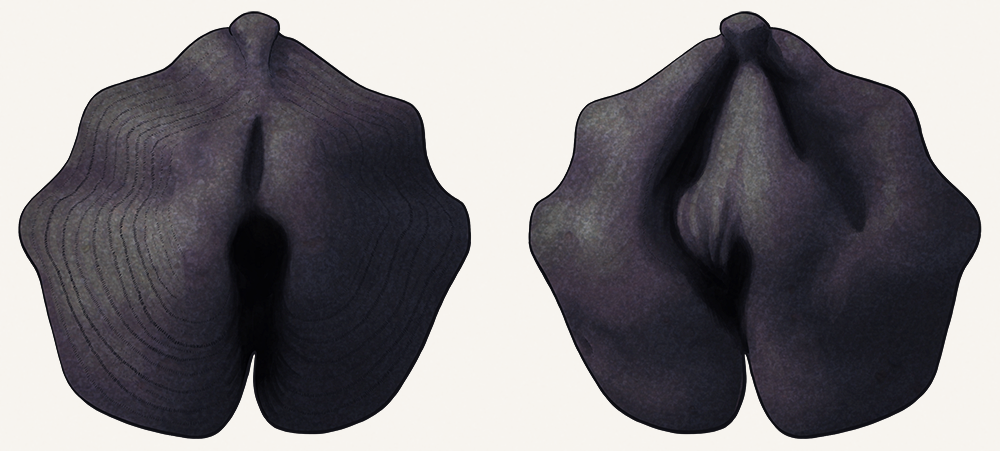Gluteus minimus are small fossils, sometimes referred to as “horse collars”, up to 11mm across (0.4″). Always slightly asymmetrical in the same direction, with growth lines on one surface and a solid internal structure, they’ve been found in large numbers from the Late Devonian of Iowa, USA (~385 mya).
Although they were first discovered in 1902, they weren’t formally described until 1975 – and ended up being named after a butt muscle.
What sort of creature they represent, however, is completely unknown. They’ve been suggested to be fish scales, fish teeth, parts of various molluscs, or brachiopods. And, more recently, to perhaps be otoliths.
They still can’t be confidently placed in any one phylum.
(Due to scarce reference images of G. minimus, this post’s illustration is directly based on the figure of the holotype specimen in the original description paper.)

